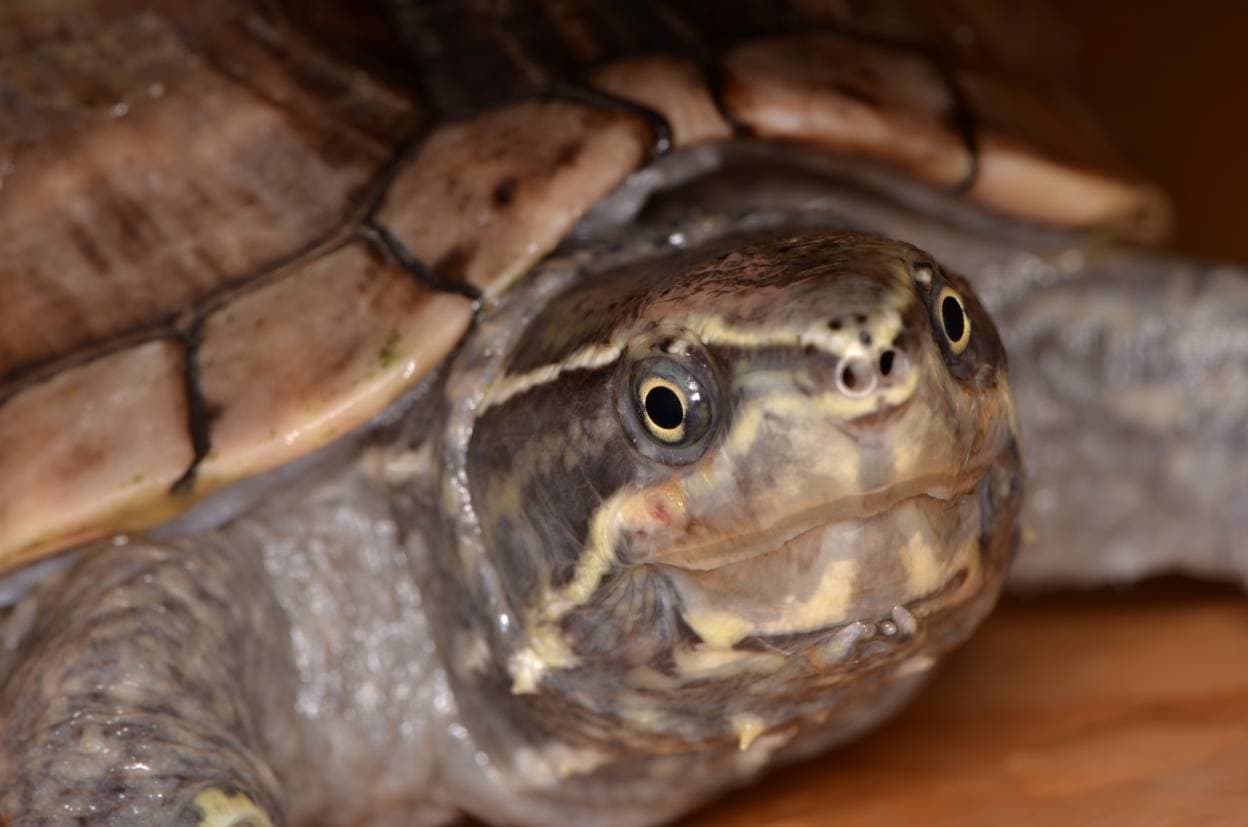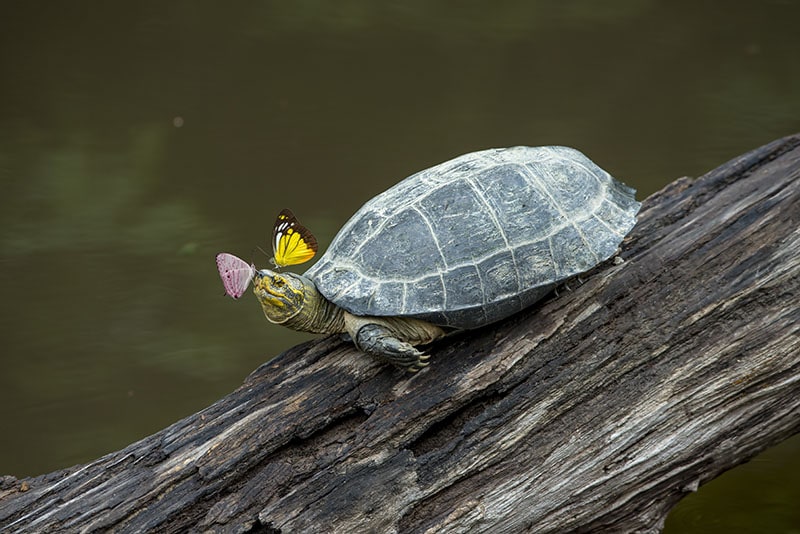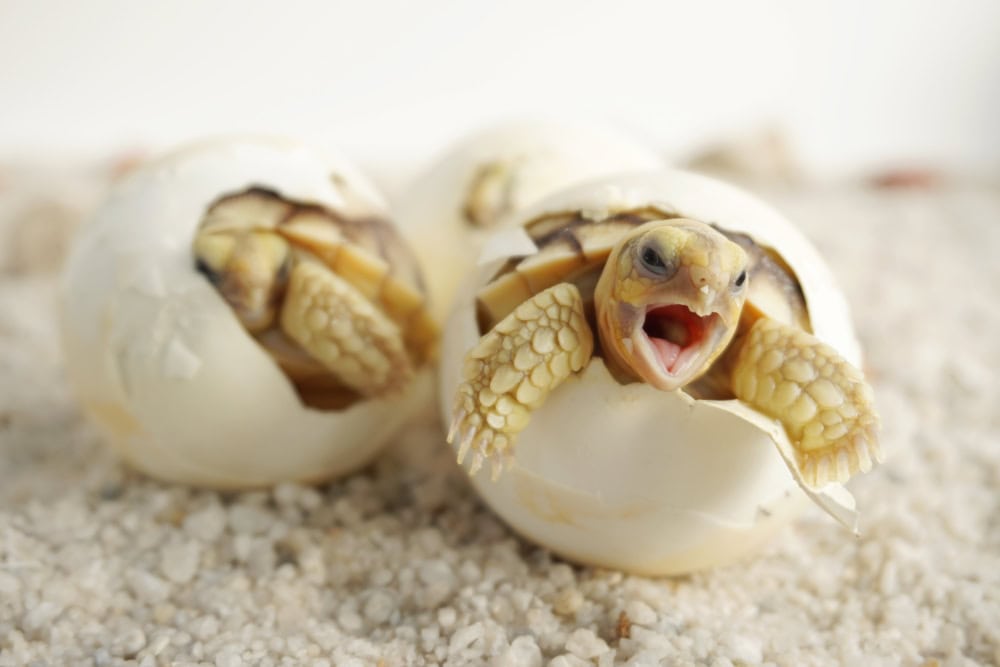Common Musk Turtle: Pictures, Facts, Diet & Care Guide

Updated on

Click to Skip Ahead
Common Musk Turtles, often known as stinkpots, are miniature aquatic wonders that have captured the hearts of reptile enthusiasts worldwide. Whether you are the proud owner of one of these amazing creatures or considering adopting one, let this article serve as your comprehensive guide to understanding, appreciating, and raising them.
| Size: | Small |
| Weight: | 1–2 lbs |
| Lifespan: | 40–60 years |
| Suitable for: | Novice and experienced owners alike |
| Temperament: | Curious, shy, responsive |
One of the exciting aspects about the Common Musk Turtle is that they are not a mixed breed; they are a distinct species known scientifically as Sternotherus odoratus. Originating from North America, they are notable for their small size and their unique ability to release a foul odor when threatened, which has earned them the nickname “stinkpot”.
Common Musk Turtle Characteristics
How Much Do These Turtles Cost?
Common Musk Turtles are native to North America, but they have gained popularity among reptile enthusiasts around the globe. Prices for Common Musk turtles vary based on factors such as age, size, and health condition.
But generally, you can expect to pay anywhere between $20 and $70 for a hatchling. Their relatively affordable price, coupled with their unique characteristics, contributes to their growing popularity in the pet market.
Please note, though, that the sale of turtles with carapaces thinner than 4 inches is strictly prohibited in the United States. Thus, you’ll likely have to go to a specialized breeder if you wish to adopt a hatchling.

Common Musk Turtle Behavior
These turtles are known for their curious and shy nature. They are highly active and inquisitive, often exploring their surroundings, swimming around, and occasionally even climbing.
However, Common Musk Turtles can be somewhat territorial, especially if they feel their space is being encroached upon. It’s important to provide enough space if you’re keeping multiple Common Musk Turtles together.
Do Common Musk Turtles Make Good Pets?
Common Musk Turtles make good pets for anyone seeking a pet turtle that’s easy to care for. That said, it’s vital to consider the long life of these creatures. As such, they might be better suited to experienced turtle owners who can provide the necessary care and attention needed throughout their lifetime.
Common Musk Turtle Tank Mates
Common Musk Turtles may be able to cohabit with other turtles of similar size and temperament, provided the tank is large enough to prevent territorial disputes. Some possible tank mates include Painted Turtles and other Common Musk Turtles.
However, you should always observe their behavior when introducing new tank mates. This is especially true for other male Common Musks. Introducing a male into a tank with another male can lead to issues. Watch them closely!

Care Sheet & Habitat Setup
| Care Aspects | Requirements |
| Light Requirements | UVB lighting |
| Tank Size | 20 to 30 gallons for one Common Musk turtle (more for additional turtles) |
| Water Temperature | 72°F to 78°F |
| Plants | Live aquatic plants |
| Substrate | Soft, sandy substrate |
| Filtration | Shallow water filter |
| Water | Non-chlorinated |
Things to Know When Owning a Common Musk Turtle
Food & Diet Requirements
Common Musk Turtles are omnivorous creatures capable of consuming a wide range of foods. Their natural diet in the wild consists of small fish, tadpoles, algae or duckweed, and small insects such as dragonfly nymphs. However, when it comes to feeding them in captivity, their diet should be carefully planned and balanced to ensure they receive the right nutrition.
A healthy diet for your turtle can include cut fish and earthworms, which provide a great source of protein. Crickets can also be incorporated into their diet as they are a readily accessible food source in most pet stores and also provide a great source of protein.
In addition to these protein-rich foods, commercial turtle pellets sold in pet stores can be a major component of their diet. These pellets are specifically designed to provide a balanced diet for turtles, containing all the necessary vitamins and minerals they need to stay healthy.
One interesting aspect of feeding Common Musk Turtles is their individual food preferences. Consider experimenting with different foods to identify what your turtle prefers. While doing so, it’s important to research and ensure that the new food is safe for your turtle to consume.
Young Common Musk Turtles should ideally be fed once daily. As they age and their growth slows down, feeding can be reduced to every other day. Feeding methods can also vary. Some turtle owners prefer to allow their turtles to eat as much as they can in one sitting, while others opt for a timed feeding session, typically between 15 and 20 minutes long.
It’s crucial to monitor your turtle’s eating habits and make adjustments as needed. Overfeeding or underfeeding can lead to health problems over time. Remember, a varied and balanced diet is the key to keeping your Common Musk Turtle healthy and happy.

Size & Growth Chart
| Age (Years) | Approximate Size (Inches) |
| 1 | 1.5 |
| 2 | 2.2 |
| 3 | 2.8 |
| 4 | 3.3 |
| 5 | 3.7 |
| 6 | 4.1 |
| 7 | 4.4 |
| 8 | 4.6 |
| 9 | 4.8 |
| 10+ | 5 (Full size) |
Lifespan & Health Conditions
With proper care, Common Musk Turtles can live between 40 and 60 years. Regular veterinary checks can help identify any potential health issues early.
- Vitamin deficiencies
- Minor fungal infections
- Respiratory infections
- Shell rot
Male vs Female
Male and female Common Musk Turtles exhibit physical and behavioral differences. Males are slightly smaller in size compared to their female counterparts, which is a common trait in many turtle species. Additionally, males possess a distinguishably longer tail, a trait that is often used to identify the gender of these turtles.
When it comes to behavior, male Common Musk Turtles have been observed to be more territorial and can display aggressive behavior, especially toward other males. This can make housing multiple males in the same enclosure a challenge and is generally not recommended.
If you are planning to keep a male and female Common Musk Turtle together, it’s important to keep an eye on their behavior, as the male can occasionally disturb the female.
3 Little-Known Facts About The Common Musk Turtle
1. Common Musk Turtles Are Accomplished Athletes
Despite their small size, Common Musk Turtles are strong swimmers and climbers. They often explore their environment, providing endless entertainment for their owners.
2. They Have a Unique Nickname
The Common Musk Turtle’s unique defense mechanism is releasing a foul odor when threatened. This weird technique earned it the nickname “stinkpot”.

3. They Will Remember You
Common Musk Turtles, contrary to some reptiles, can recognize their caregivers, making the bond between pet and owner even stronger.
Final Thoughts
While their small size and spunky nature might draw you in, it’s essential to understand that owning a Common Musk turtle comes with a long-term commitment and responsibility.
With their specific care needs and potential lifespan of over a decade, these turtles are better suited to experienced reptile owners. However, for those ready to take on the challenge, Common Musk Turtles can offer a truly unique and rewarding pet ownership experience full of personality and surprise.
Featured Image Credit: Marek Velechovsky, Shutterstock










